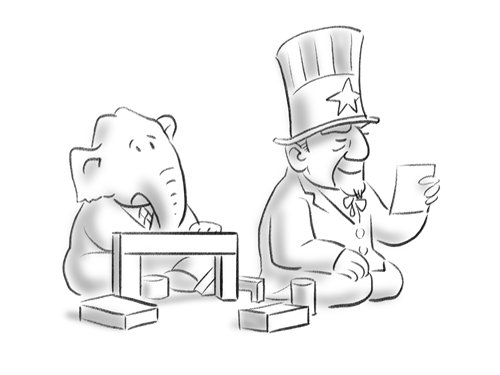
Illustration: Liu Rui/GT
The US Department of Defense has renamed the US Pacific Command to US Indo-Pacific Command. There are also reports that a big part of US' incremental military expenditure in the 2018 fiscal year will be used in the Indo-Pacific region. It seems that the Donald Trump administration's Indo-Pacific strategy has become more than a concept, and is gradually coming into operation.
Changing a name is not exactly a shift in strategy, but an indication of increasing US attention to India and the Indian Ocean. The US hasn't changed its military deployment and has barely mentioned the corresponding political or economic strategy, particularly the economic cooperation that India is concerned about.
The Indo-Pacific strategy shows a change in Washington's attitude toward international cooperation. International cooperation was only a part of the US' national security strategy, but together with the alliance system, it is now the foundation of the Indo-Pacific strategy. It also shows that the result of the Indo-Pacific strategy largely depends on other countries' attitude, especially Japan and India, which adds to the uncertainty.
Japan's perspective on international developments has changed greatly. As China is rising steadily and the US is becoming more unpredictable, Japan's strategic trust in Washington is decreasing. Media and decision-makers in Japan have adjusted their stance in favor of China-Japan relations since 2018. Although the adjustment is unable to change Japan's support for its alliance with the US and the Indo-Pacific strategy, it will affect Japan's way of participating in the strategy and will magnify the strategic difference between Tokyo and Washington.
India is becoming more vigilant about the US. New Delhi made an effort to strengthen ties with Washington, trying to increase its ability of counterbalancing China and obtain economic benefits from the US. However, many of India's attempts failed. The US tightening the rules of the H-1B visa program is a heavy blow to India's economy. Besides, the US restricts technology transfer to India. New Delhi takes advantage of the US in terms of security, but is vigilant about it as well. The US' emphasis on the Indo-Pacific strategy indicates that it will enhance its deployment in the Indian Ocean, which will bring strategic pressure on India unless it is willing to accept US dominance in the region as Japan and Australia did. Consequently, once China-India relations improve, India will reduce its strategic dependence on the US and therefore be less enthusiastic about the Indo-Pacific strategy.
More importantly, the Indo-Pacific strategy is inconsistent with US policies in other realms. The strategy requires the US to be a responsible country and provide security guarantee and protect other interests of its allies and partners.
However, slogans like "America First" and "Make America Great Again" worry its allies. The US moves on trade, regional issues and international mechanisms are isolating it on the global stage. This is inconsistent with the international cooperation that the Indo-Pacific strategy requires.
In general, the Indo-Pacific strategy is not exactly a strategy. Although it has become more than a concept, it is no more than a vision that lacks operating details. More importantly, the strategy is not completely under the control of the US, for it will be influenced by the international situation. Compared with Barack Obama's rebalancing to the Asia-Pacific strategy, there is more uncertainty in the Indo-Pacific strategy.


